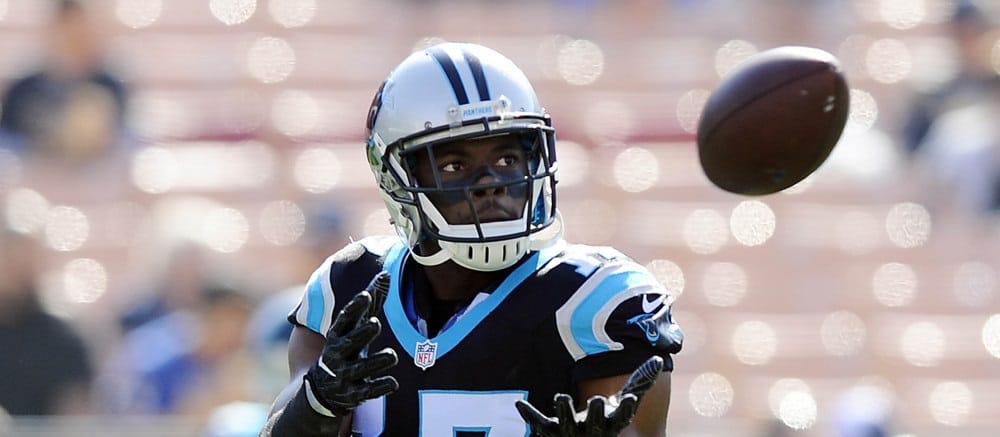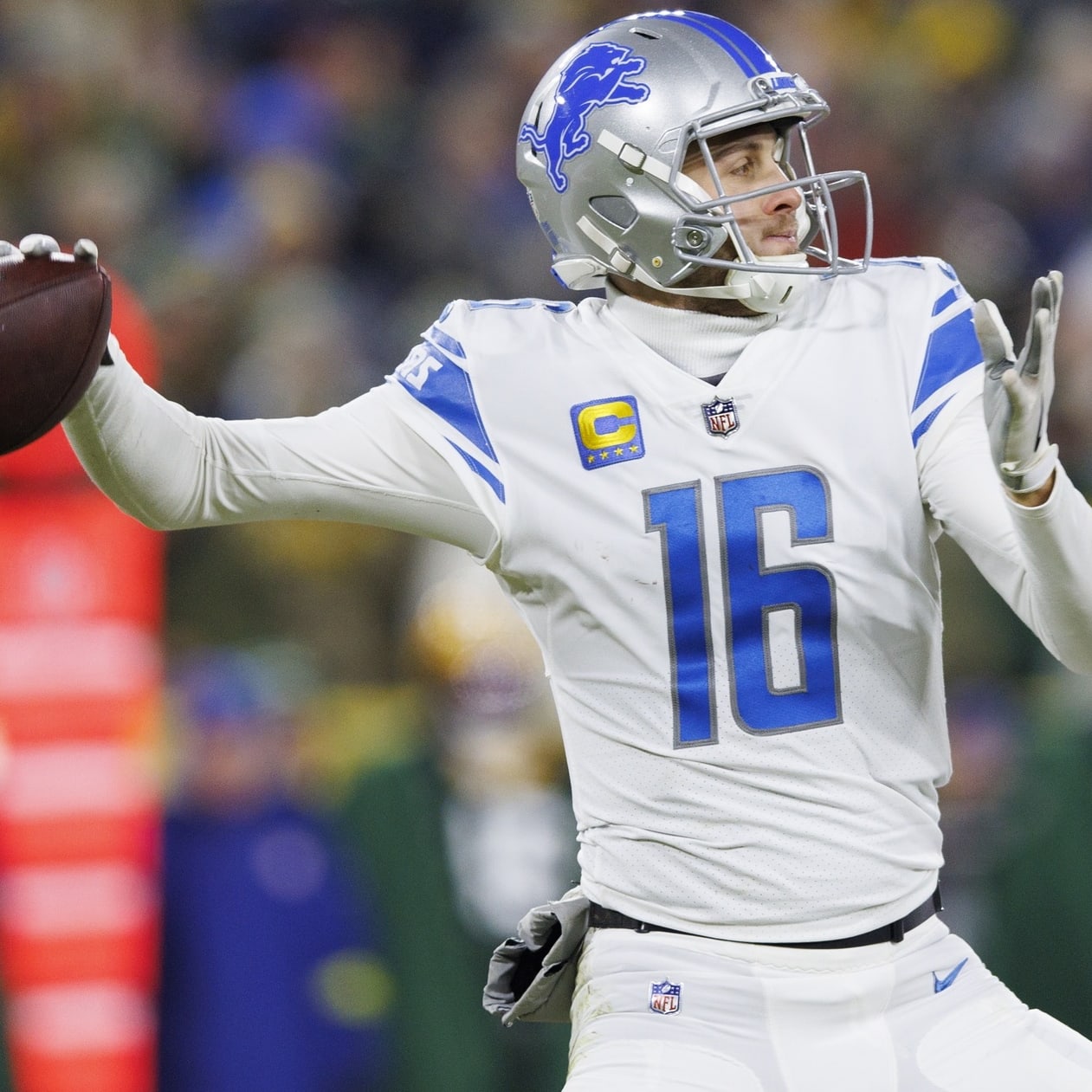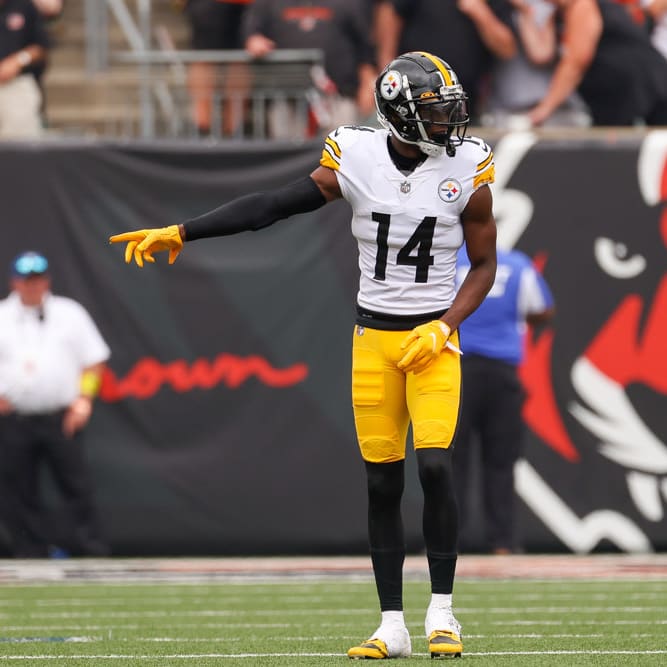This article is part of our Best Ball Strategy series.
Like any fantasy format, to win in Best Ball you have to do a sufficient job of avoiding early disasters. The earliest picks are the most important, so we can't afford to screw them up. But it's not enough to avoid obvious errors early – eventually you'll have to make a couple shrewd zigs where the losing teams zag, and it'll be a huge boost to your team if you can find above-replacement contributors in the later rounds.
With this article I'll name my favorite players who go in the last two rounds. I'll refer to ADP numbers from the BestBall10 system, in which the last two rounds are picks 217 through 240.
QUARTERBACK
Unfortunately, there's next to nothing to bank on here. Tua Tagovailoa (220.7), Ryan Fitzpatrick (228.89), Dwayne Haskins (230.07), Nick Foles (231.39), Jarrett Stidham (232.74), Tyrod Taylor (235.7), and Justin Herbert (237.77) are the only potential starters available this late.
I'm worried about Ron Rivera foolishly pressing the scale to rig a competition in favor of the terrible Kyle Allen, but I think Haskins is so much better that even a dope would spot Allen for irredeemably inferior. Haskins is therefore my favorite of this group. Tagovailoa would probably interest me second most, because I don't believe in Fitzpatrick at all and don't think Fitzpatrick can win a real competition between the two. Even if that's true, the problem with Tagovailoa is that the Dolphins might rig the competition between himself and Fitzpatrick, if only to use Fitzpatrick as a human shield until the offensive line proves itself.
Any of these players are a justifiable tournament risk for a team using a Zero QB approach, but for now at least in the vast majority of scenarios you'll want to settle your quarterback rotation earlier.
RUNNING BACK
We have at least a few interesting options here. I'll just get to the names, listed in descending order of my personal ranking.
-Damien Harris, NE (218.66)
Josh Jacobs, of course, had a very successful rookie season with the Raiders last year. Jacobs was a backup at Alabama behind Harris of all people, who for some reason spent almost all of his rookie year as a healthy scratch for the Patriots. But you know who else spent almost all of his rookie season with the Patriots as a healthy scratch? James White.
Harris (5-10, 216) ran a 4.57 40 to go with a 37-inch vertical and 121-inch broad jump at the combine, which is an above average athletic profile. All of Harris' testing numbers were better figures than what Jacobs posted at his pro day. Not only that, but Harris was the more productive of the two at Alabama. Although Harris is precisely one year older than Jacobs -- they have the same birthday! -- it still strikes me as significant that Harris ran for 2,913 yards (6.8 YPC) and 22 touchdowns over a span in which Jacobs ran for 1,491 yards (5.9 YPC) and 16 touchdowns. The truther in me believes Harris is better than Sony Michel, so I think this starting role could change hands if Michel gets hurt again. Harris is perhaps my ideal Round 20 target.
-Travis Homer, SEA (238.93)
Since the Seahawks selected DeeJay Dallas in the fourth round of the 2020 draft, many have concluded that Homer faces a demotion. I don't think that's true, or at least I'm willing to bet that with a 20th-round pick.
Homer already started over Dallas when the two played at Miami (FL) in 2018, and Homer is only about a month older. Homer ran for 985 yards (6.0 YPC) and four touchdowns that year while Dallas ran for 617 yards (5.7 YPC) and six touchdowns. Dallas' athletic testing was pretty disappointing – 4.58-second 40, 33.5-inch vertical, 119-inch broad jump at 5-foot-10, 217 pounds – even at about a year older than Homer was at his trip to the combine. Homer posted a 4.48-second 40, 39.5-inch vertical, and 130-inch broad jump at 5-foot-10, 201 pounds, and since he was 20 at the time he might have developed a bit further since then.
Chris Carson is locked into a three-down role for however long Rashaad Penny (knee) is out, but even if we assume the fumbling stops, it's concerning that Carson had injury issues more years than not, going back to his Oklahoma State stint. If Carson were to miss time, Homer's explosiveness makes him appear more threatening from scrimmage than Dallas.
-Ito Smith, ATL (237.77)
I'm not particularly high on Smith as a prospect at this point, nor am I among those who think Todd Gurley is completely toasted. But any running back can get hurt, and it's hard to see the Falcons giving Gurley more than 750 snaps or so. Given that, it's a little odd to me that Smith sometimes goes undrafted in best ball leagues. Brian Hill only served as Devonta Freeman's backup last year because Smith got hurt, and Qadree Ollison doesn't strike me as especially viable, especially for passing down snaps. Undrafted rookie Craig Reynolds might have had a shot in the XFL. As long as someone like Lamar Miller doesn't sign with Atlanta, I like Smith's chances of earning the RB2 role behind Gurley
Smith might be Atlanta's primary passing down back, even if Gurley stays healthy all year. Smith was a fourth-round pick in 2018, placing his pedigree above those of Hill (fifth round, 2017) and Ollison (fifth round, 2019). Smith posted strong numbers at his pro day, running a 4.45-second 40 to go with a 36.5-inch vertical and 119-inch broad jump. He ran for 4,538 yards (5.5 YPC) and 42 touchdowns in 51 games, adding 140 receptions for 1,446 yards and seven touchdowns in his Southern Mississippi career. Smith split the backfield there with but generally outplayed and played ahead of Jalen Richard.
The NFL production hasn't been there yet for Smith, whose rookie year was a total dud, but he split snaps with Tevin Coleman that year and might have shown more in practice than what showed up on the box score. As much as the odds are generally against Smith at this point, his odds are better than any other runner on the Atlanta bench, and I think in the 20th round the price is low enough to bet on Smith's college production and athletic metrics.
WIDE RECEIVER
-Devin Funchess, GB (226.18)
Funchess is loathed by many in the fantasy community, but I'm eager to add shares in the 20th round or even a bit earlier. As much as the Marquez Valdes-Scantling/Geronimo Allison hype from last year understandably burned a lot of people, I'd argue that Funchess and Allen Lazard are a totally different breed. I faded last year's No. 2 and No. 3 wideouts in Green Bay, but this year is different.
Allison in particular was one of the worst starting receiver prospects of recent memory, and Lazard displaced him last year to promising effect. The Packers had no one better than Valdes-Scantling or Jake Kumerow to play outside, however, so that suffering endured all year.
Funchess' arrival presents a clear, major upgrade over MVS and Kumerow. As much as he'll always have below average hands, Funchess could still yet develop into a useful starting wideout in the NFL if only because he presents a viable target so often. On 2,497 career snaps he's drawn an impressive 316 targets, so if he plays 700 snaps this year his career target rate would project to about 89 targets. If Lazard or Davante Adams were to miss any time, Funchess could surge well past 100 targets. Funchess will be just 26 this month, yet he's three years removed from a season where he caught 63 of 111 targets for 840 yards and eight touchdowns at age 23.
-Steven Sims, WAS (234.21)
I can't imagine why Sims is falling this far, but the best explanation I can think of is Washington's fourth-round selection of Antonio Gandy-Golden out of Liberty. I like Gandy-Golden, but I don't see much reason to think he'll play inside, which is where Sims lines up. Based on what we know now, the Washington wideout rotation should be pretty straightforward: Terry McLaurin, Kelvin Harmon, and Gandy-Golden play the outside snaps, while Sims plays the vast majority of the slot snaps.
Sims' rookie season last year was quite impressive, even with efficiency numbers that look bad at a glance. It's not good, for instance, that Sims averaged 5.5 yards per target with a 60.7 percent catch rate, but I don't think it means as much as Sims' outrageously high target rate – 56 targets on 314 snaps. That target rate means Sims has a flair for getting open, and his work as an open-field runner demonstrates his upside after the catch. Not only did Sims average 4.9 yards after the catch per catch (69th percentile), but he ran for a 65-yard touchdown against the Patriots and returned a kickoff for a 91-yard touchdown against the Lions.
Sims was a really good player at Kansas, so his strong rookie season is consistent with his history. He needs to drop fewer passes after letting six hit the ground last year, but in the 20th round I will always chase 56 targets on 314 snaps.
-Trent Taylor, SF (240.03)
Taylor is perhaps a long shot after dealing with two seasons of major injury, but 49ers beat writers seemed to think he was poised to lead the 49ers in receptions if he hadn't busted his foot in training camp last year. A slot specialist only, Taylor's margin of error is narrowed both by his injury history and his lack of positional versatility. However, Taylor might be good enough in the slot to earn the vast majority of applicable reps.
If Taylor stays healthy, he should be able to displace Kendrick Bourne from the slot. Bourne's best NFL season was last year, when he caught 30 of 44 targets for 358 yards and five touchdowns. That's a 68.2 percent catch rate at 8.1 yards per target, which is decent, but to draw only 44 targets on 475 snaps with an average depth of target of 8.2 yards means he wasn't getting open much. Consider Taylor's 2017 rookie year for contrast: 60 targets on 493 snaps.
Taylor caught 43 of 60 targets that year for 430 yards and two touchdowns -- a lower YPT figure of 7.2, but at a higher catch rate of 71.7 percent. The 49ers passing game completed 69.2 percent of its passes at 8.4 YPA last year versus 59.6 percent at 7.0 YPA in 2017, so Taylor's rookie season was far more impressive than what Bourne posted last year. Consider Taylor in the last round especially if you've already selected Jimmy Garoppolo, Deebo Samuel, or George Kittle.
-Corey Davis, TEN (223.90)
Davis admittedly has little or no route to the big breakout season we've long hoped for, but at this late in the draft he's a useful boost to the floor of your wide receiver production. The Titans will be hard-pressed to run the ball as much as they did last year, just as A.J. Brown, infallible as he is, probably won't be able to maintain 61.9 percent catch rate at 12.5 YPT. If any other part of the Tennessee offense regresses, then Davis is probably good enough to swoop in for the vacated shares. Even in a disappointing season last year Davis played well for his own part, catching 62.3 percent of his passes at 8.7 yards per target. If Brown should miss any time, god forbid, Davis would resume the WR1 role and push for top-25 utility at receiver.
TIGHT END
I usually settle my tight end rotation before the last two rounds, but if I don't then I'll probably consider these guys.
-Tyler Eifert, JAC (234.48)
Eifert played 507 snaps last year, which is more than twice as many snaps as he played over 2017 and 2018 combined. There's no guarantee that he holds up for more snaps this year, but in the last round you can afford the speculation. Even if 500 snaps is as good as it gets with Eifert from this point onward, Eifert's target rate last year is encouraging all the same. He drew 0.98 air yards per snap, 81st percentile among tight ends, and he's well known for his red-zone prowess.
-Logan Thomas, WAS (N/A)
So long as Washington doesn't end up with O.J. Howard, I really think Thomas is a good sleeper this year, at least at his $0.00 price tag. He drew air yardage at 0.85 yards per snap last year (70th percentile) while playing off the bench in Detroit. Although he'll turn 29 this year, Thomas was a college quarterback who may still yet be developing his tight end skill set. If Thomas' skill set does come around then look out – he's an excellent athlete at tight end. Thomas was a great running quarterback at Virginia Tech, thanks in large part to his 4.61 speed, 35.5-inch vertical, and 11.23 agility score at 6-foot-6, 248 pounds.
Although he's guaranteed nothing as far as playing time, Thomas' only competition is Jeremy Sprinkle, Richard Rodgers, and Thaddeus Moss. None of them is near Thomas' level of athleticism, nor are any of them likely to pose the pass-catching threat that Thomas does.
-Dalton Keene or Devin Asiasi, NE (N/A)
These two are both rookie third-round picks, so there is a lot of risk with both of Keene and Asiasi. Generally speaking, you should only consider them in tournament payout setups. The Patriots passing game won't be very good in 2020, and there are already plenty of players demanding targets between Julian Edelman, N'Keal Harry, Mohamed Sanu, and James White.
Still, Matt LaCosse and Ryan Izzo are awful and I expect at least one of these rookies to jump them both on the depth chart. Keene is an Austin Hooper-type athlete with lots of YAC ability, while Asiasi is a more bulky tight end but still one with above average athleticism.
DEFENSE
-Tampa Bay (206.95)
I know Tampa is a bit outside of our stated pick range, but they still sometimes fall to the 19th so I'll address them anyway.
A lot of people think the Tampa Bay pass defense is bad, but watch it become one of the best in the league this year. Carlton Davis, Sean Murphy-Bunting, and Jamel Dean are probably the best cornerback prospect trio in the league, and incoming rookie safety Antoine Winfield Jr. looks like a beast. The run defense is elite, the pass rush is good enough, and the Tampa Bay offense shouldn't turn the ball over nearly as much in 2020. Given the price, this is my single favorite defensive target in fantasy football right now.
-Denver (212.67)
Bradley Chubb is back from his ACL tear, and his return should help bring one last surge out of Von Miller after a disappointing 2019 season. The addition of Jurrell Casey and McTelvin Agim should help on that front, as well. The Vic Fangio defense features a lot of unique details that take time to catch on, so I'd also expect improvement for the mere fact that they're going into their second season with Fangio. As much as it's far from ideal to face Patrick Mahomes twice a year, the Raiders and especially the Chargers should be more accommodating.
-Washington (232.61)
This secondary could be bad, I just don't think it matters given how dominant the Washington pass rush might be. Montez Sweat, Ryan Kerrigan, Jonathan Allen, Matthew Ioannidis, and Daron Payne is an excellent rotation in itself -- throwing in Chase Young makes it almost unfair. The Washington secondary isn't guaranteed to be bad, either. They traded the excellent Quinton Dunbar, but they signed Kendall Fuller to go with a couple post-hype free agent prospects in safety Sean Davis and corner Ronald Darby. This team could lead the league in sacks per snap, yet they're going in the last round, 22nd among defenses. I don't get it.












